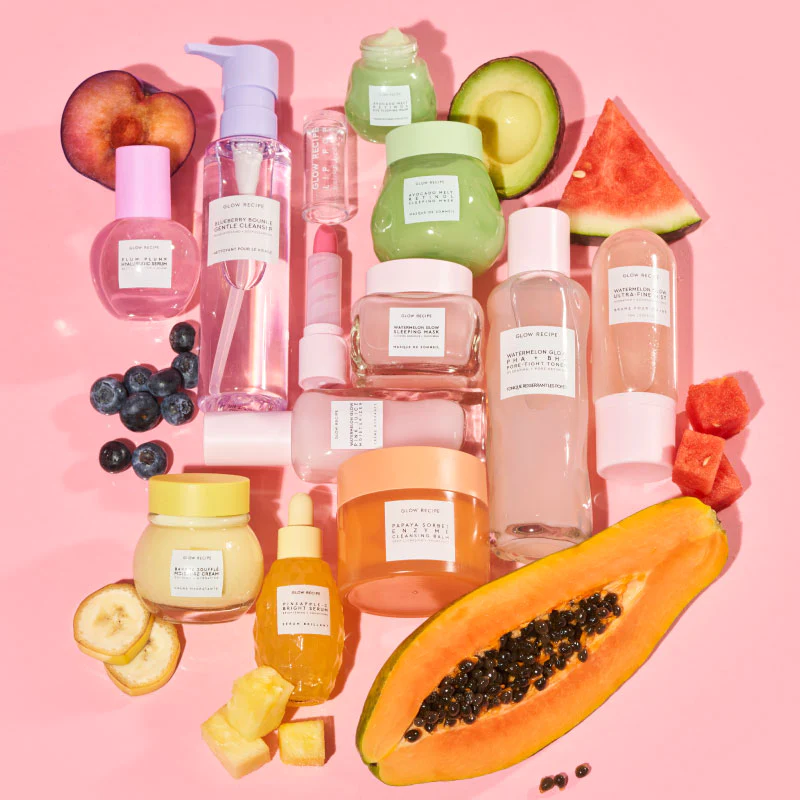Recently, there has been an online joke about the “Sephora 10-year-olds” and their obsession with makeup and skincare. As trends come and go, these adolescents are convinced by their favorite influencers that they must buy the newest serum or retinol for their “wrinkles”. Besides burning a hole into their parents’ pockets, what are the effects of this trend on their skin? Is it skincare, or is the mixture of 10 products ruining their skin?
What is the Difference between Adolescent and Adult Skin?
Adolescents have thinner skin than adults. In a study on the skin thickness of young infants and adolescents, researchers used ultrasound echography to find that the mean range of deltoid and suprascapular skin thickness of adolescents (13-15 years) was between 1.81mm and 2.43mm. Of course, skin thickness will vary depending on the body part; however, according to study.com, for adults, it is between 1.7 mm and 6.1 mm (measurement of the epidermis and dermis). Since the skin of adolescents is significantly thinner than that of adults, skincare products will absorb much faster, and the dermis is more fragile and prone to damage.
Dermatologists’ Opinions and Recommended Skincare Routine
After reading several articles and posts, the consensus is clear: dermatologists advocate for a simple and targeted skincare regime for tweens and teens. These skincare basics include a gentle cleanser, moisturizer, and SPF. In terms of brands, Cerave and Cetaphil are among the most commonly recommended by pediatricians and dermatologists. These two brands have a range of products that are very easy to use and pick from as they utilize keywords like “hydrating” and “oil-absorbing” to indicate the purpose of the product. Those with dry skin should lean towards cleansers and moisturizers that include words like “hydrating”, while those with oily skin should pick products that reduce oil. Not sure what your skin type is? That is completely fine! Both brands have products that cater to all skin types as well.
For SPF, sometimes regarded as the most crucial part of the morning skincare routine, it is important to find a product that has no white cast and is comfortable to wear to encourage daily application. UCLA Health’s Dr. Carol Cheng is one of the many dermatologists who stress SPF in a skincare routine. “Apply a broad spectrum sunscreen with an SPF of 30 or greater every morning is of utmost importance” (UCLA Health). Again, Cerave and Cetaphil are the go-tos for gentle SPF.
Of course, it is fun to add a serum or toner to make every night feel like a spa night, so if tweens want to add something extra to their routine, they must choose a product that will not damage their skin barrier. To avoid doing so, steer clear of active ingredients, like salicylic acid and AHAs, which are included in products to target a specific skin concern (acne, rosacea, etc.) unless advised by a doctor due to a developing skin concern. Fragrance is also something to avoid, according to Dr. Allison Swanson of University Health.
Conclusion
This article is not meant to hate on tweens who are simply experimenting with skincare. I also used to be one of these easily influenced 10-year-olds and quickly found that not every product on TikTok is suitable for my skin. After piling an assortment of products on my skin, sometimes even layering two exfoliators at once, I developed severe acne that lasted until I was prescribed tretinoin. This article is more of a warning from a 15-year-old who has experienced the lasting effects of “skincare smoothies”.
Citations
“About Us.” Glow Recipe, https://www.glowrecipe.com/pages/about-glow-recipe. Accessed 31 January 2024.
Duffy, Nananamibia. “What Good Skin Care Looks Like For Young Teens.” Health Hive, 24 January 2024, https://hive.rochesterregional.org/dermatology/skin-care-kids-10-year-old. Accessed 28 January 2024.
Ko, Elizabeth, and Eve M. Glazier. “Skin gets thinner as people age.” UCLA Health, 29 July 2022, https://www.uclahealth.org/news/skin-gets-thinner-as-people-age. Accessed 31 January 2024.
Northwestern Medicine. “How Active Ingredients Act on Skin.” Northwestern Medicine, July 2021, https://www.nm.org/healthbeat/healthy-tips/how-active-ingredients-act-on-skin. Accessed 31 January 2024.
Regan, David. “Human Skin Diagram, Structure & Function – Video & Lesson Transcript.” Study.com, https://study.com/academy/lesson/human-skin-layers-function-structure.html. Accessed 31 January 2024.
Saitoh, Akihiko, et al. “Skin thickness in young infants and adolescents: Applications for intradermal vaccination.” Science Direct, 26 June 2015, https://www.sciencedirect.com/science/article/abs/pii/S0264410X15005678. Accessed 31 January 2024.
UCLA Health. “Kids into skincare may be at risk from influencers promoting inappropriate products.” UCLA Health, 25 January 2024, https://www.uclahealth.org/news/kids-skincare-dermatologists-advice. Accessed 28 January 2024.University Health. “What ‘tween’ skin care is safe to gift.” University Health, 6 December 2023, https://www.universityhealthkc.org/vital-kc/posts/what-tween-skin-care-is-safe-to-gift/. Accessed 31 January 2024.

